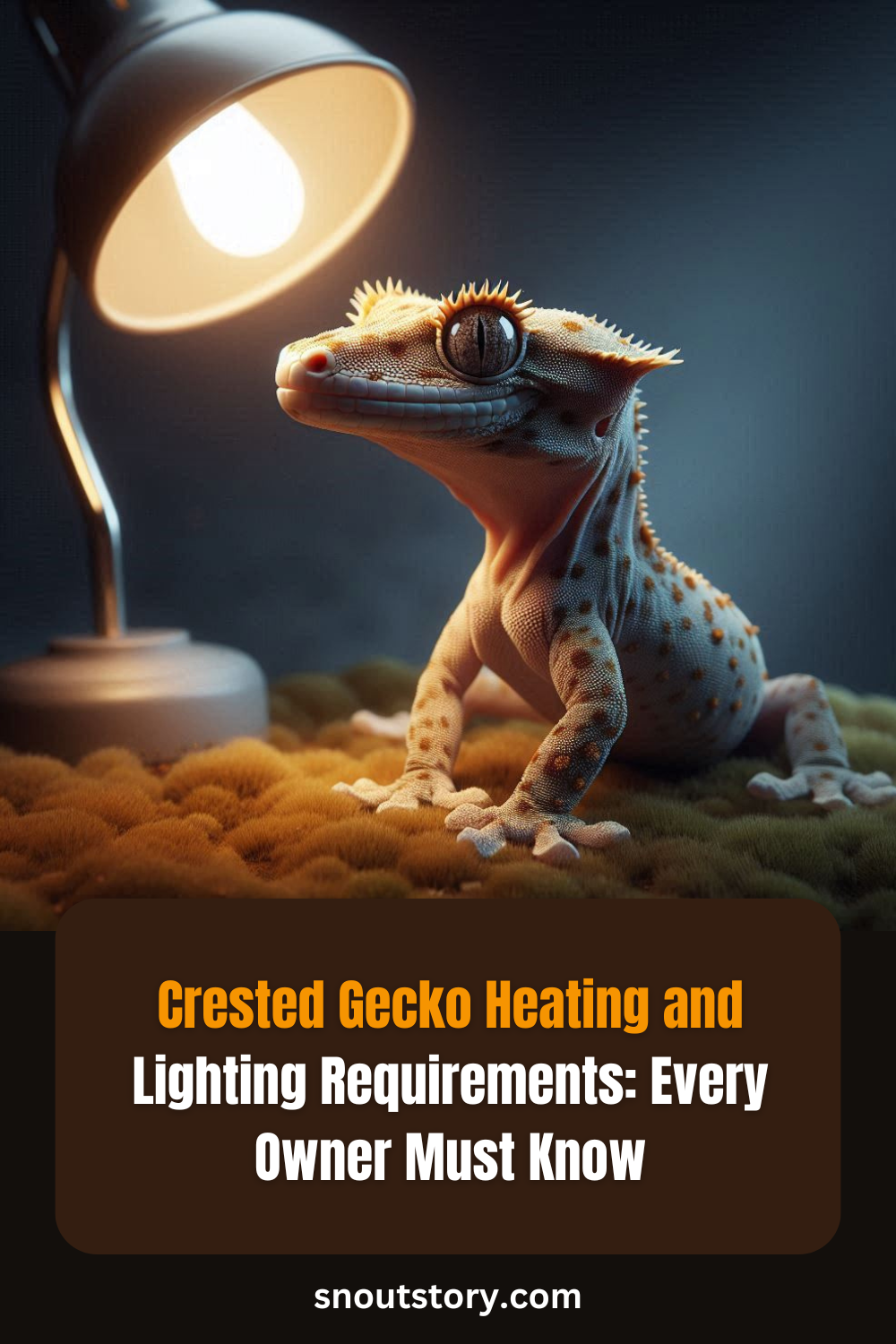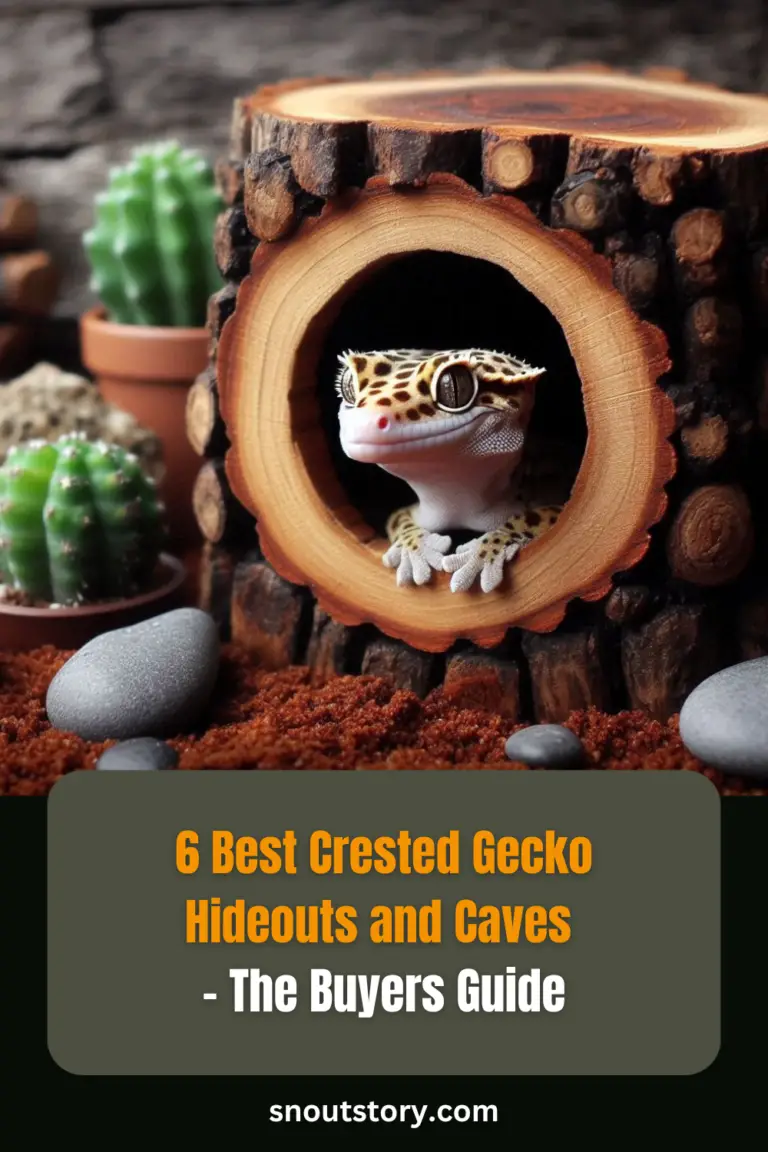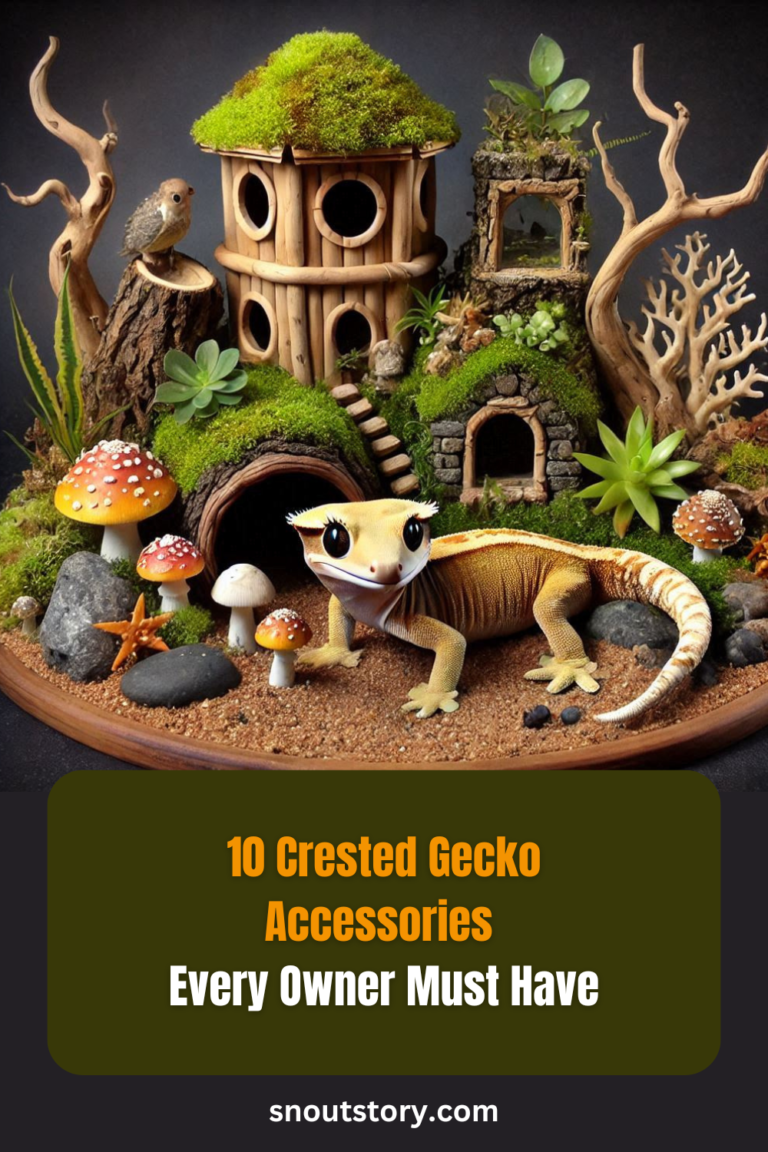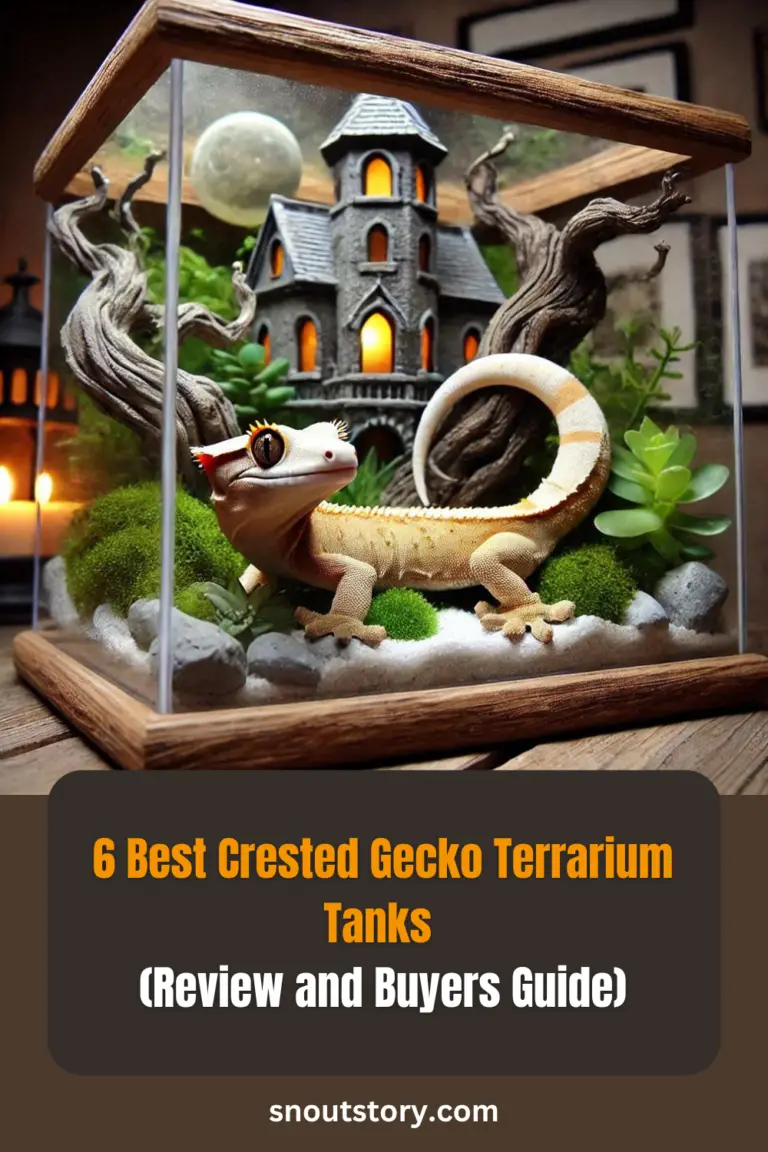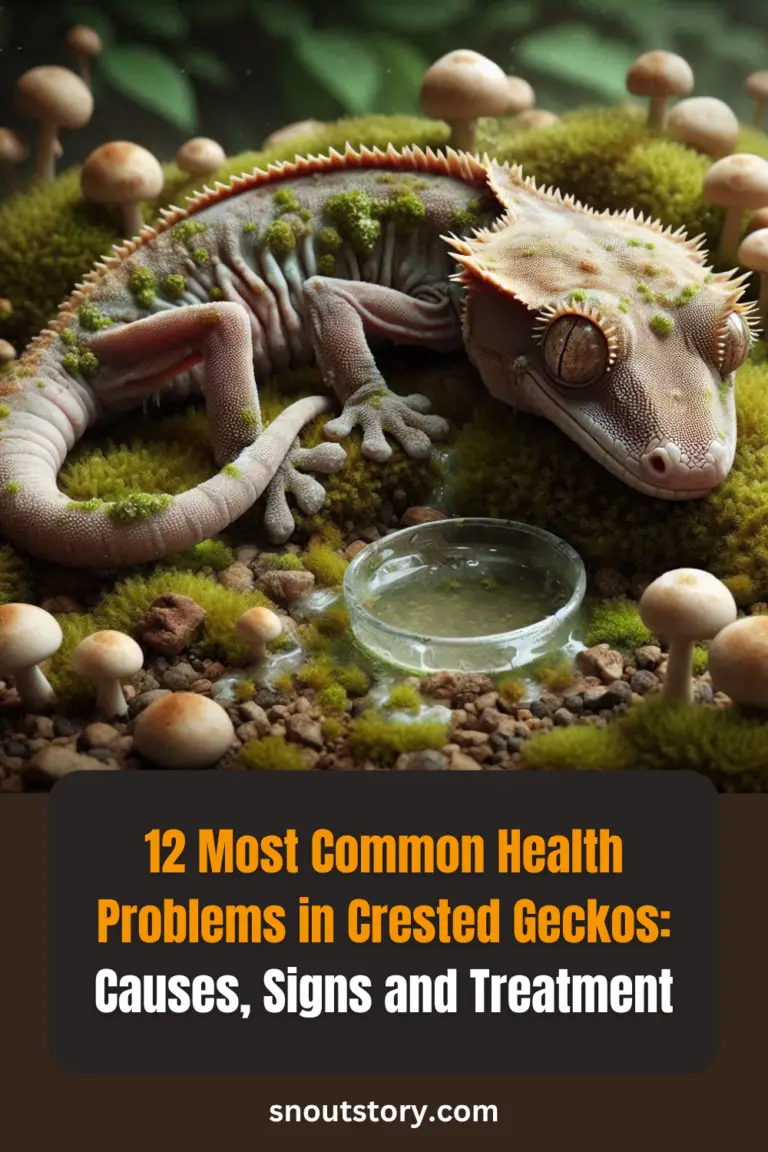Disclaimer
“This Blog is completely reader supported, for any purchase you make from affiliate links on this blog we earn a small commissions with no extra cost to you, which I use to feed my poor puppies 🥺”
Getting the heating and lighting just right for your crested gecko is crucial for their overall health and happiness. These geckos, being nocturnal, need a specific temperature range and light conditions that replicate their natural environment.
By understanding the importance of proper heat lamps and the role of UVB lighting, you can create an ideal setup that keeps your gecko thriving. With the right equipment and a little knowledge, you can provide a comfortable and nurturing habitat that supports your crested gecko’s unique needs.
So in this article we will understand in detail the heating and lighting requirements of Crested Gecko’s and consider all do’s and don’ts.
What Are the Ideal Temperature Ranges for Crested Geckos?
Understanding the ideal temperature ranges for crested geckos is essential for maintaining their health and well-being. Crested geckos thrive in temperatures between 72°F and 78°F during the day. Temperatures above 80°F can cause heat stress, while prolonged exposure to temperatures below 70°F can lead to digestive issues and lethargy.
At night, a slight drop to 65°F to 70°F mimics their natural environment, encouraging healthy activity and metabolism. If your gecko shows signs of overheating, such as rapid breathing or seeking cooler areas, ensure you have adequate ventilation and a cooler spot in their enclosure.
For signs of being too cold, like sluggish movement or loss of appetite, consider using a gentle heat source. Regularly monitoring and adjusting the habitat’s temperature ensures your crested gecko remains comfortable and healthy.
How Do You Set Up a Heating System for a Crested Gecko Enclosure?
Setting up a heating system for your crested gecko enclosure is crucial for their health and comfort. You should use an under-tank heater (UTH) to provide a gentle heat source without overwhelming the habitat. Place the UTH on one side of the enclosure to create a temperature gradient, allowing your gecko to choose its preferred warmth level.
Monitor temperatures with a reliable thermometer; aim for 72°F to 78°F during the day and a slight drop to 65°F to 70°F at night. Avoid heat lamps as they can dry out the enclosure and stress your gecko.
Here are two of the best Under-tank heaters on Amazon which we have been personally using for our bearded dragons and other geckos:
Aiicioo Under Tank Heater Thermostat – Reptile Heating Pad with Temperature Control Reptile Heat Mat

BN-LINK Reptile Heating Pad Electric Indoor Under Tank Terrarium Heating Mat

If you notice signs of overheating, such as rapid breathing or constant hiding, reduce the heat output. For signs of being too cold, like sluggishness or lack of appetite, check the heater’s functionality and consider adding an additional heat source. Regularly adjust and monitor the heating setup to ensure a stable and healthy environment for your crested gecko.
Are Heat Lamps Necessary for Crested Geckos?
You might wonder if heat lamps are necessary for crested geckos, but they typically thrive without them. The main issue with heat lamps is that they can dry out the enclosure, leading to dehydration and shedding problems for your gecko. Instead, using an under-tank heater (UTH) provides a more stable and gentle heat source.
If your gecko displays signs of dehydration, such as wrinkled skin or stuck shed, it’s a sign that the heat lamp is too intense. On the other hand, if your gecko is lethargic or refuses food, it may indicate that the enclosure is too cold, and you should check your UTH settings.
For optimal health, ensure you maintain proper humidity levels and a suitable temperature gradient using a UTH rather than a heat lamp. This approach keeps your crested gecko comfortable and reduces stress, promoting overall well-being.
Can Crested Geckos Thrive with Only Ambient Room Temperature?
You might think that ambient room temperature is sufficient for crested geckos, but it’s not always ideal. Crested geckos thrive best in temperatures between 72°F and 78°F. If your room temperature fluctuates outside this range, it can cause stress and health issues for your gecko.
Signs that the temperature is too low include lethargy, reduced appetite, and slow movement. Conversely, if the temperature is too high, you might notice your gecko trying to escape the heat or becoming excessively active.
What Types of Lighting Do Crested Geckos Need?
Understanding the lighting needs for your crested gecko is crucial for their well-being. While they don’t require as much UVB lighting like some reptiles, providing a natural light cycle is essential. Without proper lighting, your gecko might experience disrupted circadian rhythms, which can lead to stress and behavioral issues.
Signs of inadequate lighting include irregular sleep patterns and lethargy. To create an optimal environment, you should use low-wattage reptile enclosure lights to simulate daytime and ensure there’s a period of darkness to mimic night. You can consider getting one of these affordable lights that I personally use for my enclosures:
MRREPTILE UVB Reptile Light, 13W 5.0 UVB Bulb Light for Reptiles

Avoid using lights that generate too much heat, as this can lead to overheating. By maintaining a balanced light cycle, you help support your crested gecko’s natural behaviors and overall health.
Should You Use a Thermostat to Regulate Heat for Crested Geckos?
Using a thermostat to regulate heat in your crested gecko’s enclosure is essential for maintaining a stable environment. Without proper regulation, your gecko may experience stress and health issues due to fluctuating temperatures.
Causes of improper temperature regulation can include inconsistent heat sources or lack of monitoring equipment. Signs that your gecko is affected by poor temperature control include lethargy, loss of appetite, and behavioral changes.
To ensure a consistent temperature, a thermostat can automatically adjust the heat source, preventing overheating or underheating. It provides peace of mind, knowing your gecko is living in an optimal habitat. By using a thermostat, you create a stable environment that supports your crested gecko’s health and well-being.
What Are the Signs of Overheating or Insufficient Heat in Crested Geckos?
Recognizing the signs of overheating or insufficient heat in your crested gecko is crucial for their well-being. Overheating can be caused by heat lamps that are too close or a lack of ventilation, while insufficient heat might result from inadequate heating devices or placement.
Signs of overheating include excessive panting, seeking cooler areas constantly, or even lethargy. On the other hand, signs of insufficient heat can manifest as a lack of appetite, slow movement, and difficulty in shedding. To address overheating, adjust the heat source or improve ventilation in the enclosure.
For insufficient heat, ensure you have a reliable heating element and consider adding a thermostat to maintain consistent temperatures. By closely monitoring your gecko’s behavior and environment, you can prevent and treat temperature-related issues effectively, ensuring your pet thrives.
summary
If you found this content helpful and valuable, you can support us by making any of your purchases (even products other than recommended in the blog) from our affiliate links (Ofc with no extra cost to you😉).
Ensuring proper heating and lighting for your crested gecko is essential for their health and well-being. By understanding and meeting their specific needs, you can create a comfortable and supportive environment. Ideal temperature ranges, appropriate lighting types, and the use of thermostats all contribute to a thriving habitat.
Monitoring for signs of overheating or insufficient heat is crucial to prevent health issues. With the right setup and regular maintenance, your crested gecko will thrive, showcasing vibrant colors and active behavior. Implementing these heating and lighting requirements ensures a happy and healthy pet, enhancing your overall reptile-keeping experience.
Recommended

Vedant Narvekar is an experienced digital marketing expert with a profound love for nature and animals. With a career rooted in leveraging online platforms to drive engagement and promote meaningful causes, Vedant’s passion for animals inspired him to start Snout Story—a blog dedicated to educating people about pet keeping and sharing proper knowledge about caring for animals. Drawing on his expertise in digital marketing, Vedant utilizes his platform to advocate for responsible pet ownership, providing valuable insights on pet care, training, nutrition, and more. Through Snout Story, Vedant aims to empower pet lovers with the information they need to provide the best possible care for their furry companions, while also fostering a deeper appreciation for the natural world and the creatures that inhabit it.

